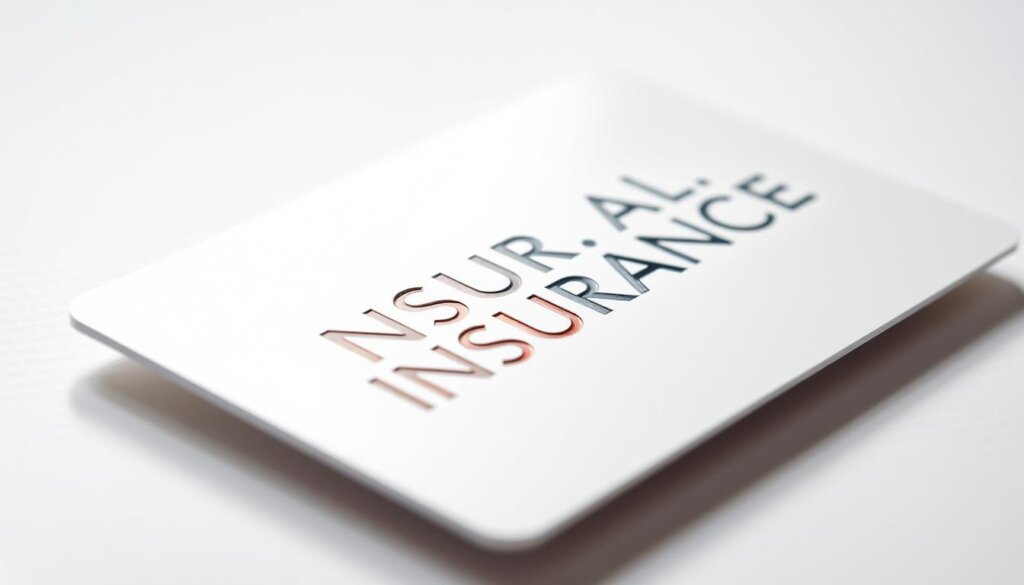Will My Insurance Cover My Routine Dental Visits?
A survey about oral health in the Unites States found a shock. Forty-two percent of adults don’t visit the dentist as much as they’d like. The reason? Money problems. Figuring out if your insurance pays for regular dental visits is important. It’s vital for keeping your teeth healthy. Since dental plans vary greatly, knowing what yours covers is key. Some plans cover the costs of regular check-ups well. However, others might have many rules and extra costs.
What does your dental plan say about routine visits? Will your insurance help with the cost of your next dental check-up? Looking closely at your dental insurance can save you from surprising bills. It makes sure your visit to the dentist goes smoothly with your budget. Routine dental visits are super important. They help catch and prevent serious teeth problems early on. So, knowing if your dental plan supports these checkups matters both for your health and your wallet.
Key Takeaways:
- Dental insurance coverage varies, affecting access to regular dental care.
- Insurance payment for dental check-ups depends on your dental plan’s details.
- Not understanding dental insurance can result in not using preventive care enough.
- Knowing your insurance terms helps you expect any costs for regular visits.
- Going to the dentist often can reduce the need for big treatments, which insurance might not cover.
Understanding Dental Insurance Basics
First, it’s key to get the basic ideas of dental insurance down. Knowing about dental plans, key terms, and what’s covered helps control costs and access dental care. This part explains these key points to help you understand how dental insurance works. It helps in getting routine dental care and check-ups.
Types of Dental Insurance Plans
Knowing the types of dental insurance for preventive care is crucial. There are mainly two kinds:
- Preventive Plans: These plans mainly cover regular exams and cleanings. They help prevent the need for more serious treatments.
- Comprehensive Plans: Offer wider coverage, including major treatments plus preventive care. This means they cover both check-ups and bigger dental work.
Important Terminology to Know
Understanding some key terms helps in figuring out insurance eligibility for routine dental exams and treatments. Here are some important ones:
- Deductibles: The money you pay before your insurance starts covering.
- Copayments: Set amounts you pay for visits or services before your insurance kicks in.
- In-Network Provider: Dentists who agree to give care at lower costs to insured patients.
- Exclusions: The treatments or conditions not covered by your plan.
Knowing these details helps patients make good choices about their dental health. They can use their insurance better for preventive care and regular check-ups. Understanding these basics helps keep your teeth healthy with the help of professional care and the right insurance.
Commonly Covered Services in Dental Plans
Knowing the difference between preventive, basic, and major dental procedures is key. This knowledge helps get the most out of dental benefits for routine visits. It also ensures proper use of insurance coverage for regular dental appointments.
Preventive care stops diseases before they start or catches them early. This includes exams, X-rays, cleanings, sealants, and fluoride treatments. These services are crucial for keeping teeth healthy and avoiding future problems.
There’s a clear line between basic and major dental services. Basic services often include fillings, extractions, and sometimes root canals. Major services cover things like bridges, crowns, and dentures. Knowing these categories helps understand coverage and possible costs at a dental exam and cleaning.
Preventive Care: What It Includes
It’s important to know what your dental plan covers under preventive care. This area covers regular check-ups and diagnostic tests. Most dental insurances fully cover these services because they focus on stopping diseases before they start.
Basic vs. Major Services
Understanding the difference between basic and major services is crucial. It helps patients know what to expect in terms of costs. While each plan is different, this knowledge ensures you get your entitled dental benefits for routine visits. It also guides you on spending for treatments under insurance coverage for regular dental appointments.
How to Check Your Insurance Coverage
To make sure you’re fully supported for dental health, it’s key to know what your dental insurance covers. This includes knowing if you have coverage for regular dental appointments and dental insurance for preventive care. Good coverage can help pay for your dental care and encourage you to visit the dentist often.
Start by looking closely at your insurance policy. This helps you understand what’s covered, especially for preventive services. Things like exams, cleanings, and x-rays are often covered because they help catch diseases early and keep your mouth healthy.
- Reviewing Your Insurance Policy: Look into your policy details to understand coverage for regular dental appointments. Make sure to check for any rules or limits that might limit your access to dental care. Look at things like the most you can spend a year, what you have to pay before your insurance starts paying, and any wait times for different services.
- Contacting Your Insurance Provider: Talking directly with your insurance company can clear up any confusion. This conversation can confirm things like which dentists you can see under dental insurance for preventive care, how to get preapproval, and how much you’ll have to pay depending on your plan and how much money you make.
Understanding these details is crucial. It helps you know what to expect for costs and keeps you going to the dentist for preventive care. This is important for keeping your teeth and gums healthy.
Typical Costs of Routine Dental Visits
Choosing a dental plan for routine checkups means knowing the costs. Prices change a lot based on services and where the dentist is located. We’ll show what you might pay for preventive care and what might not be covered by dental coverage for check-ups.
Average Costs for Preventive Care
Preventive care is about keeping teeth healthy to stop problems. It includes exams, cleanings, and X-rays. The average price for these services is:
| Service | Cost Without Insurance | Cost With Insurance |
|---|---|---|
| Initial Dental Exam | $50 – $200 | $0 – $50 |
| Cleaning | $75 – $200 | $0 – $50 |
| X-Rays | $20 – $250 | $0 – $20 |
Out-of-Pocket Expenses Explained
Even with dental coverage for check-ups, you might pay extra. This includes co-payments and fees for things not fully covered. For example, if your dentist charges more than insurance accepts, you pay the difference. Also, you’ll pay directly for any service not in a basic preventive plan.
It’s key to check your dental plan to know what’s covered. This helps avoid surprise costs and keep your teeth healthy without financial worry.
The Role of Deductibles and Copays
When it comes to routine dental care insurance, knowing about deductibles and copays is key. These terms show the costs you and your insurance split. They decide how much you spend each time you visit the dentist.
A deductible is what you pay before your insurance helps with costs. It’s important because it starts your coverage benefits. Copays are set fees you pay when getting a service. The amount can change based on your plan. You usually pay these for every service or visit.
Copays and deductibles are the linchpins in the financial structure of your dental benefits, aligning the predictability of your expenses with the regularity of your visits.
Here’s a clear breakdown of how deductibles and copays work in dental benefits for routine care:
| Aspect | Role in Routine Dental Care | Typical Impact on Cost |
|---|---|---|
| Deductibles | Initial cost barrier before insurance cover starts | Reduces frequency of minor visits due to initial cost burden |
| Copays | Fixed cost paid at the time of visit | Stabilizes cost expectations per visit |
Knowing how deductibles and copays work with routine dental care insurance is smart. It helps you plan your money better. Plus, you can use your dental benefits for routine visits without surprises.
In-Network vs. Out-of-Network Providers
Choosing between in-network and out-of-network providers greatly impacts your dental insurance coverage. This choice is especially important for insurance coverage of regular dental check-ups. In-network providers often mean less cost to you because they have agreements with insurance companies.
Knowing the effects of each choice on your dental insurance and costs is key. We will look into how both choices affect your coverage below.
Impact on Your Coverage
In-network providers have deals with your insurance, offering services at agreed prices. This leads to better care and benefits like lower co-pays. It also helps in reducing out-of-pocket expenses, making insurance eligibility for routine dental exams easier.
On the other hand, out-of-network providers usually cost more. They don’t have set fees with insurance firms. This could mean you end up paying more, especially for more than just basic preventive care.
Finding a Provider Within Your Network
Finding a provider in your network helps you get the most out of your dental insurance coverage. It makes sure you pay less from your pocket. Your dental insurance company should have a list of approved doctors, available online or through customer service.
Checking if your dentist is in your plan before you book can save you from unexpected bills. It also gives you peace of mind about being covered for regular dental check-ups.
Limitations and Exclusions in Dental Coverage
When you sign up for dental insurance, it’s key to know the limitations and exclusions in your plan. Many dental plans aim to cover regular dental check-ups but have certain rules. These rules can affect when and how you use the services. Let’s dive into common limits like how often you can visit and services that aren’t covered, impacting your out-of-pocket costs.
Frequency Limits on Visits
Most dental plans have a cap on the number of visits they’ll cover each year. For example, a plan may only pay for two routine check-ups per year. This limit shapes how often you can receive care while keeping costs low.
Services That May Be Excluded
Aside from visit limits, many plans also list procedures they don’t cover. This usually includes cosmetic work and advanced orthodontics, critical for some but not covered by basic insurance. Knowing what’s excluded can help you plan for other ways to pay or find a plan with broader coverage.
| Coverage Type | Frequency Limit | Common Exclusions |
|---|---|---|
| Routine Checkups | Twice per year | Major surgeries, Cosmetic procedures |
| Cleaning & Preventive Care | Twice per year | Orthodontics, Whitening |
| Emergency Services | No set limit | Non-urgent cosmetic repairs |
It’s important to thoroughly review your dental insurance plan to understand your coverage fully. Doing so can prevent surprise bills and help you make smart choices for extra treatments.
Importance of Preventive Care
Preventive care keeps your teeth healthy. It includes regular dental check-ups and cleanings. These are key for finding and treating dental problems early. It’s vital to know how dental benefits for routine visits work. And understanding how insurance coverage for regular dental appointments supports you is important for everyone.
- Benefits of Regular Check-ups:
- They help find problems like cavities, gum disease, and oral cancer early.
- Preventive steps can cut down the need for big and costly treatments.
- Cleanings stop plaque and tartar, which cause tooth decay and gum disease.
- Consequences of Neglecting Dental Visits:
- Not going increases the risk of serious dental diseases that are expensive to fix.
- Ignoring dental care can lead to lost teeth and even more health problems like heart disease.
- Ignoring small problems now means you could face bigger, more expensive ones later.
Following a preventive care plan with good insurance coverage for regular dental appointments protects your oral health. It also looks after your overall well-being and saves money in the long run. Having dental benefits for routine visits in your insurance plan helps ease the financial worry. It encourages regular visits to the dentist.
Dental Insurance for Families
Looking into dental insurance for families means choosing between family or individual plans. This choice impacts cost and the kind of dental care you get. It’s vital for families to think about their needs, especially for kids’ dental care which is key for good oral health.
Family dental plans cover the dental needs of the whole family under one policy. This can save money compared to buying individual plans for each person. But, individual plans might better fit families without kids or those with very different dental needs.
| Feature | Family Plan | Individual Plan |
|---|---|---|
| Cost Efficiency | Higher initial cost, but more cost-effective for multiple members | Lower initial cost, but higher cumulative cost for multiple members |
| Coverage Convenience | Single policy for all members | Separate policies needed for each member |
| Suitability | Best for families with children and similar dental care needs | Ideal for adults with differing dental care requirements or no children |
| Scope of Coverage | Broad, often including preventive and basic treatments | Can be customized to individual needs, potentially excluding unnecessary features |
It’s critical to weigh these differences when choosing dental insurance plans. The best choice depends on family size, ages, and dental health issues. Looking into preventive care within these plans is crucial. This helps figure out their worth and how well they protect your family’s dental health.
How to Appeal a Denied Claim
When your dental insurance claim is denied, knowing how to appeal matters a lot. It’s the key to possibly changing the decision. This step is vital in getting insurance to pay for dental visits they first said no to.
Steps to Take After a Denial
Start by looking closely at the denial letter from your insurance. Figure out exactly why they said no to your claim. Then, quickly gather all your dental visit info, any letters you’ve exchanged with insurance, and any other health records.
Helpful Tips for Writing an Appeal
To write a strong appeal letter, be clear and stick to what your insurance asks for. Keep it straight to the point. Show proof from your dental visits. Make sure your evidence is well-organized to help your case.
- Collect Detailed Information: Gather all the documents that prove your claim, like dental records and payment receipts.
- Adhere to Deadlines: Know when the final date to appeal is and send in your documents before then.
- Follow Up: After sending your appeal, stay in contact with your insurance to know where your appeal stands.
Getting insurance to pay for dental visits becomes easier with a good appeal. By following these steps, you raise the chances of changing a no to a yes. This makes sure you get the dental coverage you need.
Frequently Asked Questions About Dental Insurance
How often you should visit the dentist depends a lot on your dental insurance for preventive care. We’re here to answer some important questions about your dental plan for routine checkups and extra treatments you might need.
Many ask about how often they should see the dentist. This usually matches what their dental insurance plan says about checkups. Dentists often say to come in twice a year for good oral health. But, your dentist might suggest more visits based on your specific dental needs.
People also wonder about treatments beyond regular checkups. What happens if you need more than a preventive visit? It’s important to know your insurance coverage here:
- Treatments beyond routine care may only be partly covered by insurance.
- You might pay out-of-pocket, depending on your insurance policy’s coverage rate and co-payment amounts.
- Check your insurance policy or talk to your insurer for details on coverage for extra treatments and costs.
Understanding these points helps you use your dental insurance better. It also helps avoid unexpected costs for more complex treatments.
Trends in Dental Insurance Coverage
The health insurance world is quickly changing, paying more attention to preventive dental care. Insurance companies now see the value in helping cover routine dental visits. This approach helps stop serious dental problems before they start.
Companies are updating their dental plans to cover more preventive services. This change means people can get more help with routine dental visits. It’s a win-win for everyone, making dental care easier to manage and less expensive in the long run.
Preventive care is key in dental insurance. It helps people stay healthy and avoids costly dental work later on.
Here’s a table showing how dental coverage has gotten better recently. It compares the dental benefits in updated insurance plans.
| Feature | Before Updates | After Updates |
|---|---|---|
| Preventive Visits Per Year | 1 | 2 |
| Coverage for Cleanings | 50% | 100% |
| Coverage for X-rays | Limited | Extended to include full series |
| Out-of-Pocket Maximum | $1500 | $1000 |
This shift to better dental coverage is not just about market trends. It’s a plan to make sure everyone stays healthier. As we focus more on preventive care, everyone benefits from better health and lower costs.
Conclusion: Making the Most of Your Dental Insurance
Understanding your dental insurance is key to keeping your teeth healthy. Most insurance plans offer great benefits for regular check-ups. But, it’s important to know what your plan covers, how often you can get care, and which dentists you can see. To avoid surprise bills and get the most from your plan, always review it carefully.
It’s crucial to read all the details in your insurance paperwork. The terms and conditions might seem complex but they reveal important info about what’s covered and what’s not. Knowing things like coverage limits and excluded services prevents unexpected problems. Plus, understanding these details helps you handle insurance claims better.
Using all available resources is wise for both your dental health and wallet. You can get help from your insurance company, dentist, or third-party services. They can guide you in using your benefits wisely. By staying informed and proactive, you’ll be able to take full advantage of your dental insurance and maintain great oral health.










